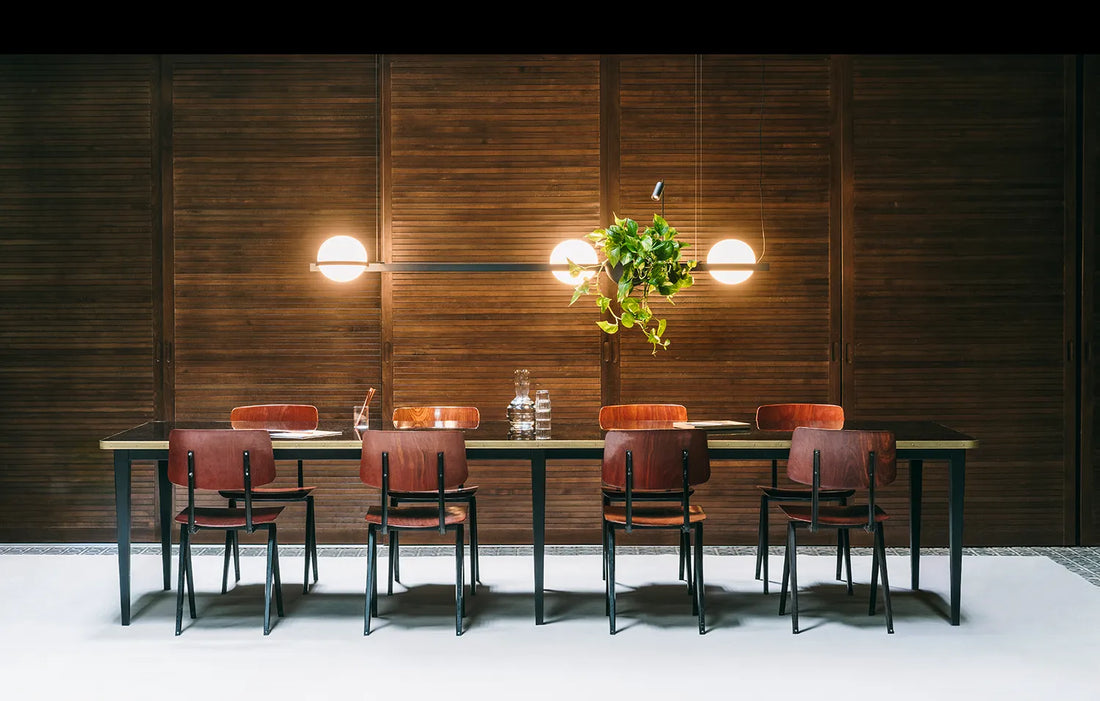
Biophilic Lighting Design – Connecting People with Nature Through Light
Share
Modern life often keeps us indoors for 90% of the day—under static, artificial light. Yet, our bodies and minds evolved in rhythm with the sun. This disconnect between humans and the natural world has led to rising stress, fatigue, and even poor sleep quality.
Biophilic lighting design offers a solution. By drawing inspiration from nature’s patterns, tones, and cycles, it helps us feel grounded and alive again. The goal isn’t just illumination—it’s restoration.
What is Biophilic Lighting Design?
Biophilic design stems from the word biophilia, meaning “love of life.” It’s an architectural and design philosophy centered on reconnecting people with nature.
Biophilic lighting brings this concept to illumination—using light to recreate the experience of the natural world. It’s about:
- Mimicking daylight transitions.
- Using organic materials and soft diffusion.
- Encouraging connection with outdoor environments.
Rather than flooding a space with uniform brightness, biophilic lighting creates depth, texture, and natural variation—qualities that our eyes and minds instinctively respond to.

Core Principles of Biophilic Lighting
-
Natural Light Integration
Maximize the use of daylight. Use skylights, clerestories, and large glazing areas to bring sunlight deep into interiors. -
Dynamic and Tunable Lighting
Artificial lighting should shift throughout the day—cooler tones in the morning for alertness, warmer tones in the evening for relaxation. Tunable white LED systems make this possible. -
Natural Materials and Finishes
Fixtures made from wood, stone, bamboo, or linen diffuse light softly and naturally. -
Mimicking Nature’s Rhythms
Vary intensity and direction of light to simulate sunrise, midday brightness, and dusk transitions. -
Connection to Outdoors
Blend interior lighting with visible outdoor scenes. Light continuity between inside and out enhances spatial harmony.
Applications Across Sectors
🏡 Homes
- Living areas: Maximize daylight with sheer blinds, light shelves, and reflective surfaces.
- Bedrooms: Warm, dimmable lighting to promote melatonin production and restful sleep.
- Bathrooms: Use cool morning light to energize and mimic daylight entry.
🏢 Workplaces
- Circadian lighting systems that change tone and brightness through the day boost alertness and reduce fatigue.
- Biophilic task lighting with organic materials enhances comfort and focus.
- Combine daylighting with smart controls to minimize glare and energy use.
🏨 Hospitality and Wellness Spaces
- Spas and hotels: Use dynamic, warm-to-cool transitions that mirror natural cycles and create calm.
- Restaurants: Integrate greenery with soft accent lighting to create relaxed, nature-inspired ambience.
🏥 Healthcare
- Healing environments: Exposure to natural light improves recovery rates.
- Circadian lighting reduces stress and helps regulate patient sleep cycles.
Design Strategies and Techniques
-
Layer Light Like Nature
Combine diffuse ambient light with accent and task layers for visual balance. -
Use Organic Shapes and Patterns
Avoid harsh geometry. Curved fixtures, perforated shades, and irregular patterns evoke the organic flow of nature. -
Integrate Greenery
Uplight plants, highlight textures, and let shadows play naturally—creating dynamic visuals similar to light through trees. -
Reflect and Filter Light
Use natural finishes—timber, stone, or textured plaster—to scatter light softly. -
Control Systems
Use sensors to balance daylight and artificial lighting, ensuring energy efficiency and comfort.

Case Studies & Examples
Corporate Office in Amsterdam
A tech company redesigned its headquarters using daylight sensors, tunable LEDs, and wooden pendant fixtures. Employees reported a 20% increase in focus and improved overall wellbeing.
Boutique Spa in Bali
Lighting transitions gently throughout the day, complemented by filtered sunlight through bamboo screens. Guests experience deep relaxation and connection to nature.
Residential Retreat in New Zealand
The design integrates skylights and warm evening dimming, recreating natural cycles that help residents unwind after sunset.
Challenges and Balance
Biophilic lighting should feel authentic, not themed. Overusing greenery or overly warm tones can make spaces feel contrived. The goal is balance—subtle cues that support mood and wellbeing without overwhelming the design language.
Budget can also be a challenge, as tunable systems and smart controls may increase upfront costs. However, energy efficiency and health benefits make them worthwhile long-term investments.
The Future of Biophilic Lighting
As sustainability and wellness converge, biophilic lighting will shape the next generation of interior environments. With advances in LED technology, IoT controls, and daylight harvesting, designers can now simulate nature’s patterns more accurately than ever.
Expect to see more spaces using lighting to evoke natural phenomena—sunlight through leaves, soft moonlight reflections, or the gradual warmth of dawn.
The result? Spaces that feel alive, evolving, and human-centered.

Conclusion – Lighting as Living Nature
Biophilic lighting design invites us to reconnect with the world beyond walls. It transforms artificial environments into living, breathing spaces that align with our natural instincts.
Incorporating light inspired by nature doesn’t just enhance aesthetics—it improves health, focus, and emotional wellbeing. In short, biophilic lighting helps us feel more human.
At Lighting Design Online, we create lighting schemes that bring nature indoors. Whether it’s a workplace seeking balance or a home craving tranquility, our expert designers can craft biophilic lighting solutions that enhance wellbeing and beauty. Reach out today to begin designing with nature in mind.
